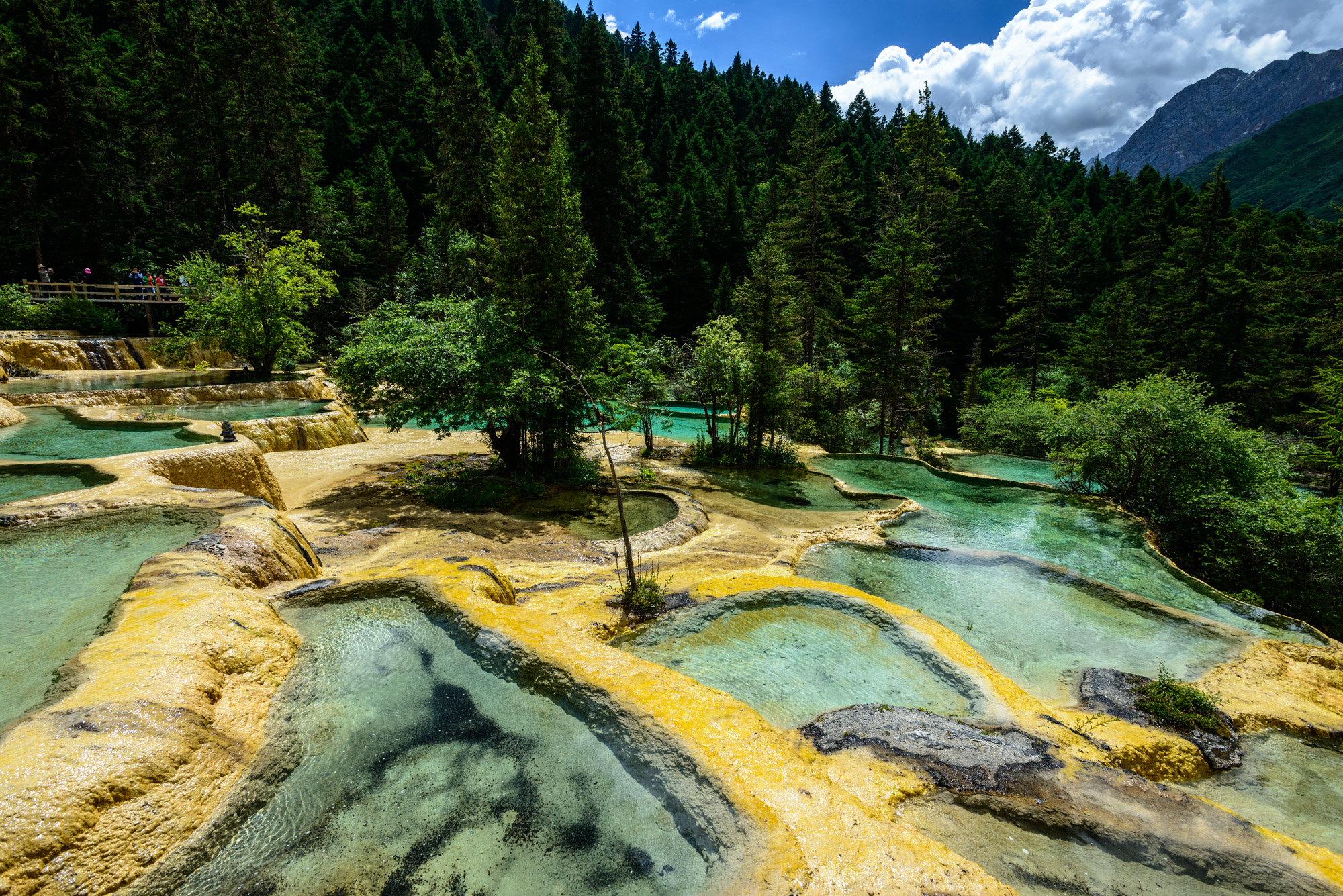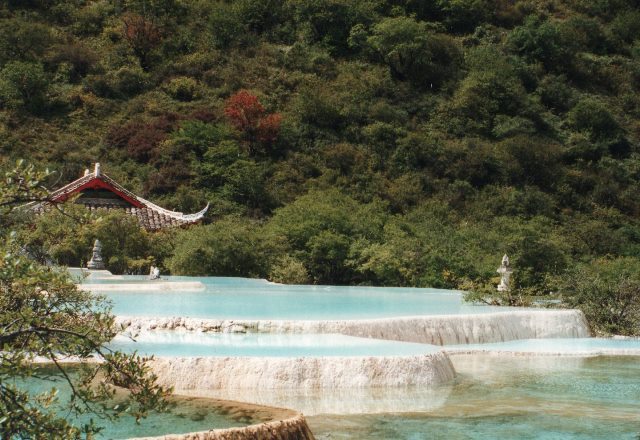Huanglongsi: Architectural Significance And History
Share

Nestled in the breathtaking landscapes of Sichuan Province, China, Huanglongsi is a remarkable site that embodies both architectural brilliance and rich historical significance. This ancient temple complex, with its stunning structures and serene surroundings, offers a glimpse into the spiritual and cultural heritage of the region.
The Historical Background of Huanglongsi

Huanglongsi, also known as the Huanglong Temple, dates back to the Tang Dynasty (618-907 AD). It was built during a time when Buddhism was flourishing in China, and the temple served as a vital center for Buddhist worship and education. The site has undergone numerous renovations and expansions over the centuries, reflecting the evolving architectural styles and religious practices.
The temple complex is not just a religious site; it is also a testament to the craftsmanship of ancient Chinese builders. The intricate carvings, vibrant murals, and majestic pagodas showcase the artistic skills of the time. The temple has been a pilgrimage site for centuries, attracting devotees and tourists alike who come to admire its beauty and seek spiritual solace.
Architectural Features of Huanglongsi
Huanglongsi is renowned for its unique architectural style, which blends traditional Chinese elements with local influences. The complex features several key structures, each with its own significance.
The Main Hall
The Main Hall, or Da Xiong Bao Dian, is the centerpiece of the temple complex. This grand structure is characterized by its sweeping roofs, ornate wooden beams, and intricate carvings depicting Buddhist deities and symbols. The hall houses a large statue of Sakyamuni Buddha, drawing visitors who come to pay their respects.
The Bell Tower
Adjacent to the Main Hall stands the Bell Tower, a striking structure that serves both functional and aesthetic purposes. The tower is adorned with detailed carvings and offers a panoramic view of the surrounding landscape. The sound of the bell ringing is said to purify the mind and spirit, making it a significant feature for worshippers.
The Pagoda
The pagoda at Huanglongsi is another architectural highlight. This multi-tiered structure is not only visually stunning but also serves as a symbol of Buddhist cosmology. Each level of the pagoda represents different realms of existence, and it is often used for meditation and reflection.
Cultural Significance
Huanglongsi is more than just an architectural marvel; it is a cultural hub that plays a vital role in the preservation of Buddhist traditions. The temple hosts various festivals and ceremonies throughout the year, attracting thousands of visitors. These events provide insight into the local customs and the enduring influence of Buddhism in Chinese society.
Festivals and Celebrations
One of the most important festivals celebrated at Huanglongsi is the Buddha's Birthday, which takes place in the fourth month of the lunar calendar. During this time, the temple is adorned with colorful decorations, and various rituals are performed to honor the Buddha. Visitors can witness traditional performances, partake in offerings, and experience the vibrant atmosphere of the festivities.
Best Time to Visit Huanglongsi
The ideal time to visit Huanglongsi is during the spring (March to May) and autumn (September to November) months. During these seasons, the weather is mild, and the natural beauty of the surrounding landscape is at its peak. Spring brings blooming flowers, while autumn offers stunning foliage, making your visit even more memorable.
Weather Information
- Spring (March to May): Average temperatures range from 10°C to 20°C (50°F to 68°F). Expect occasional rain showers, so pack accordingly.
- Autumn (September to November): Average temperatures range from 5°C to 15°C (41°F to 59°F). The weather is generally dry and pleasant, perfect for outdoor exploration.
Key Attractions and Activities
When visiting Huanglongsi, there are several activities and attractions that you should not miss:
- Temple Tours: Guided tours are available to help you understand the history and significance of each structure within the complex.
- Photography: The stunning architecture and picturesque surroundings provide ample opportunities for photography enthusiasts.
- Meditation: Take time to meditate in the serene environment, allowing the peaceful atmosphere to enhance your spiritual experience.
- Local Cuisine: Don’t forget to try the local Sichuan cuisine available at nearby eateries, known for its bold flavors and unique dishes.
Getting There
Huanglongsi is easily accessible from major cities in Sichuan, such as Chengdu. You can take a bus or hire a private transfer to reach the temple complex. The journey offers scenic views of the mountainous terrain, enhancing your travel experience.
For convenient travel arrangements, consider booking your flights and accommodations through the following links:
Conclusion
Huanglongsi stands as a remarkable testament to the architectural ingenuity and spiritual heritage of China. Its historical significance, stunning structures, and vibrant cultural practices make it a must-visit destination for travelers seeking to immerse themselves in the beauty and depth of Chinese Buddhism. Whether you are a history enthusiast, an architecture lover, or simply in search of tranquility, Huanglongsi promises an enriching experience that will linger in your memory long after your visit.



